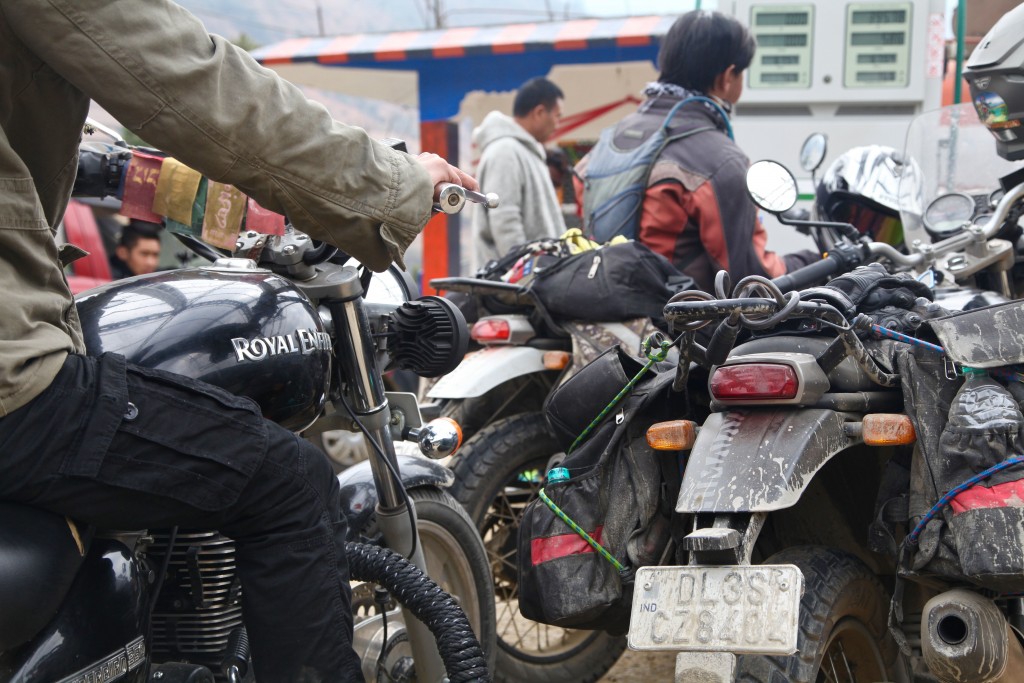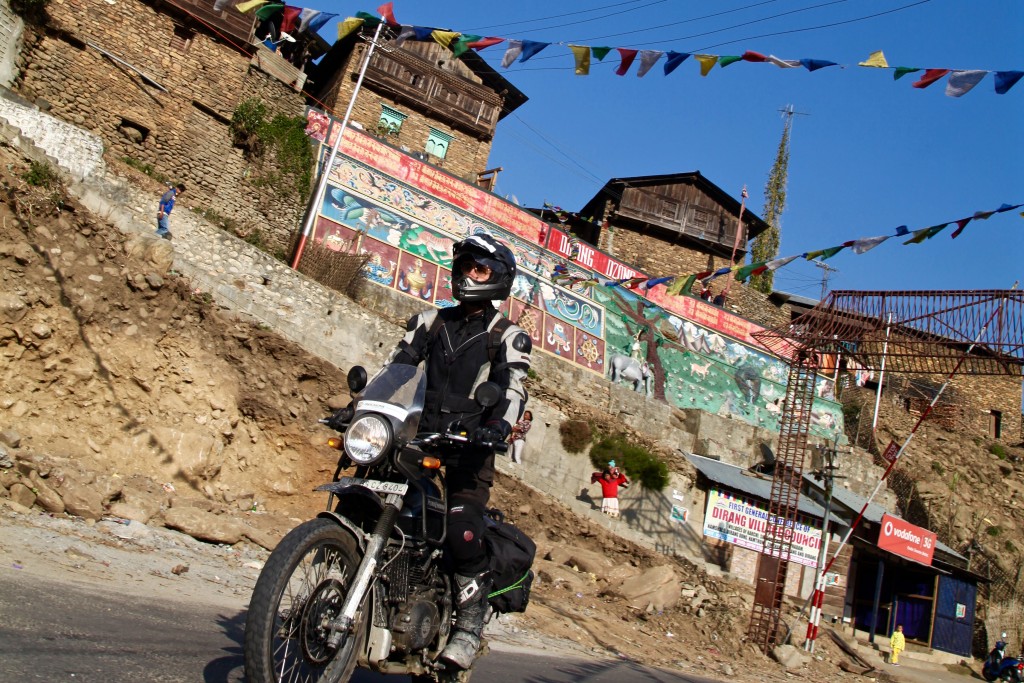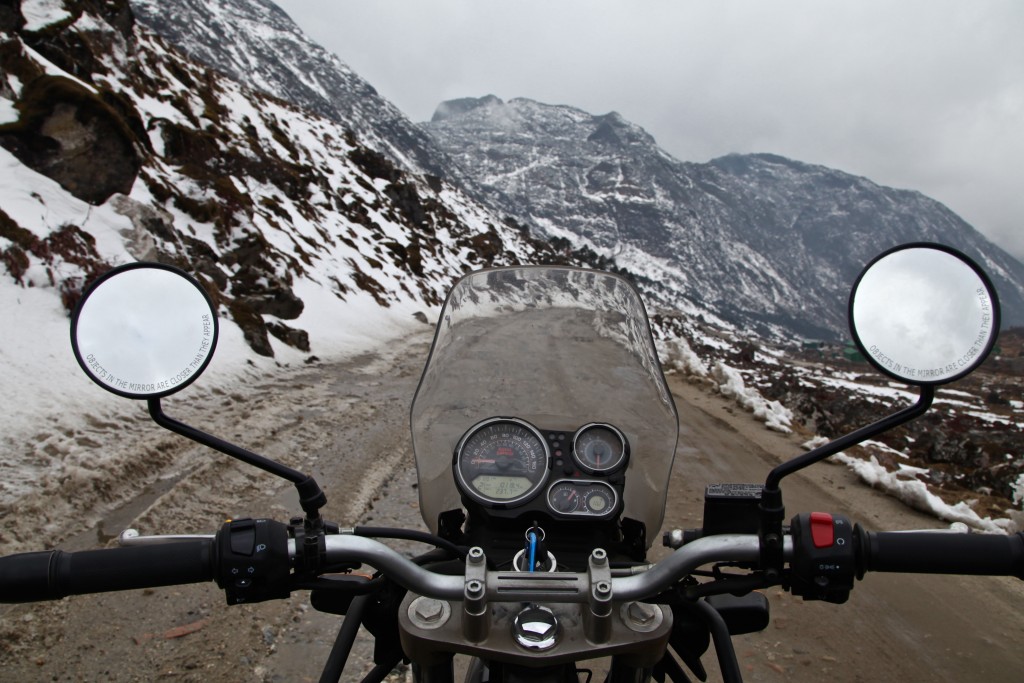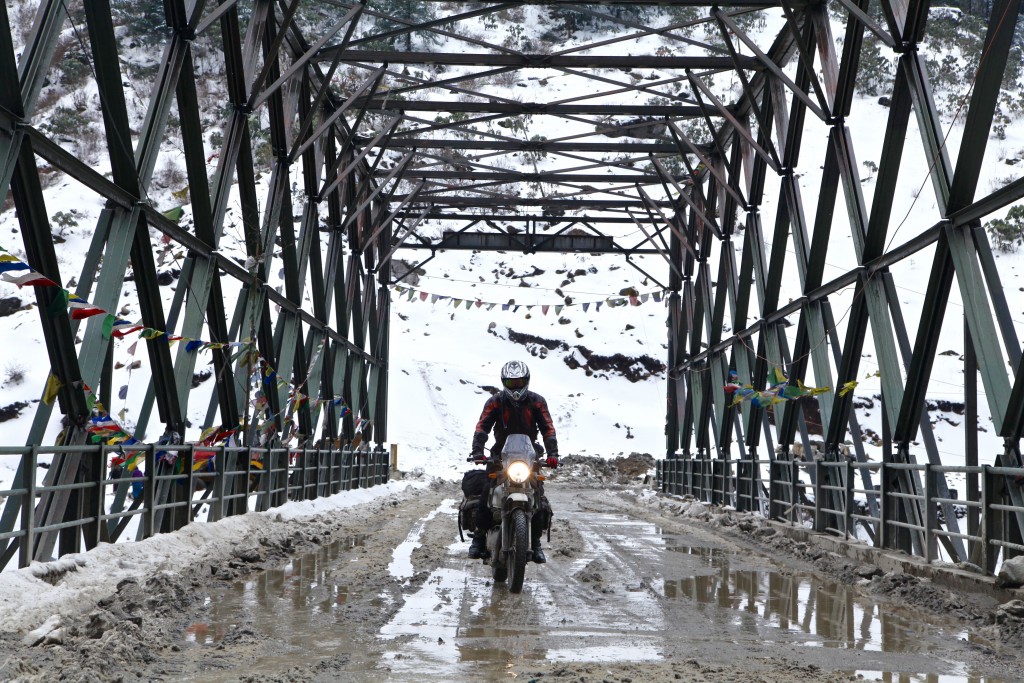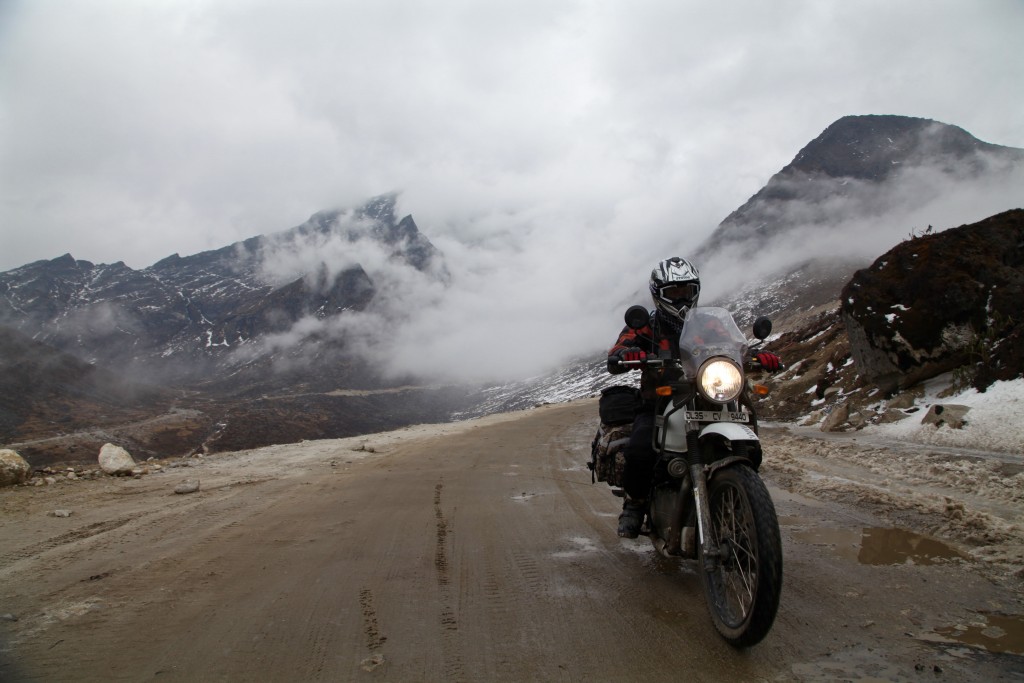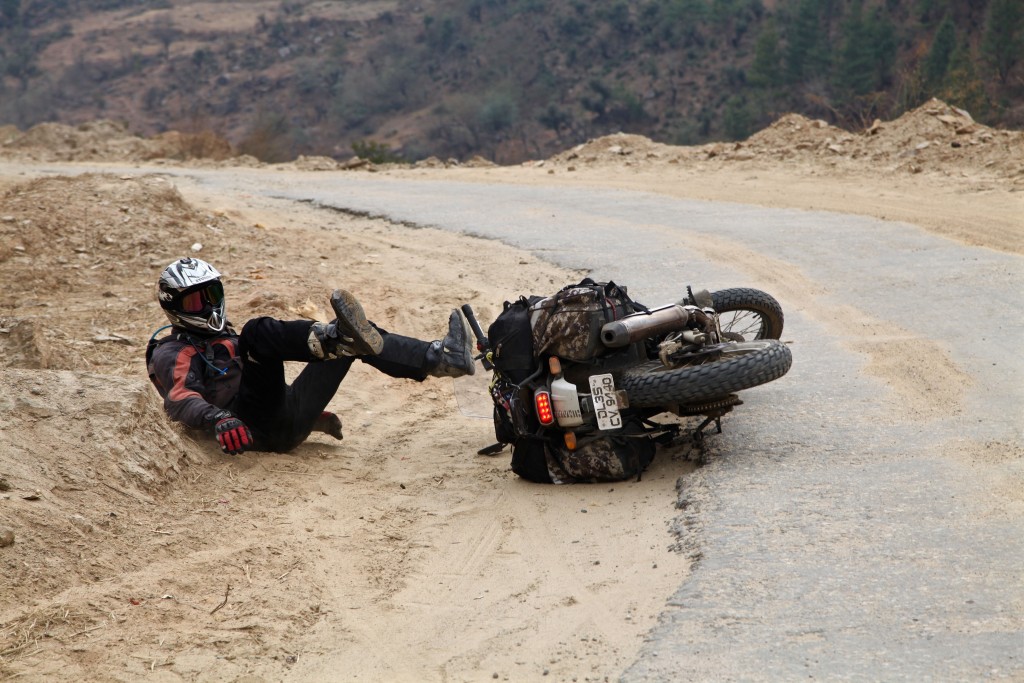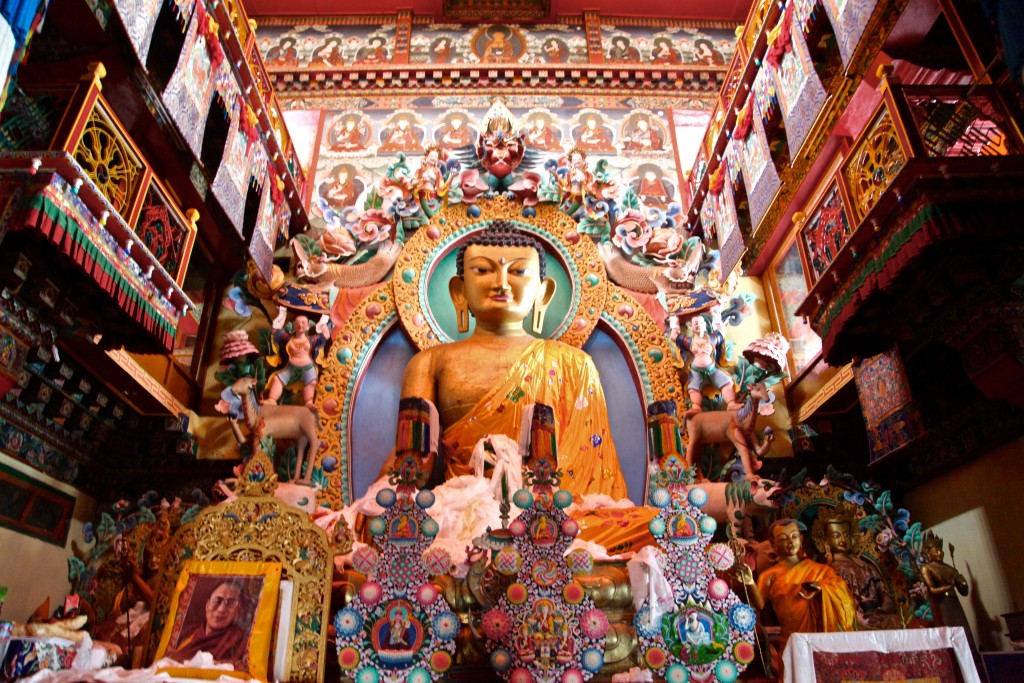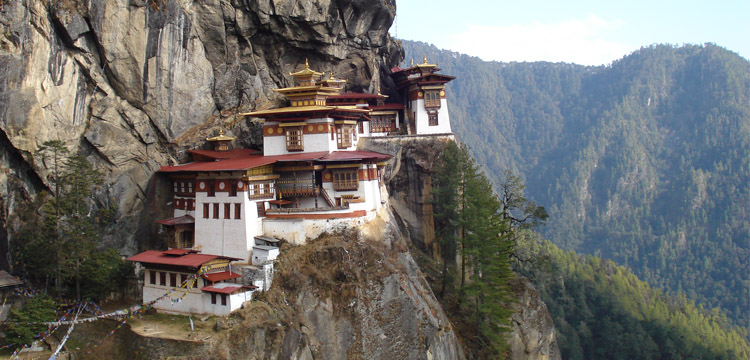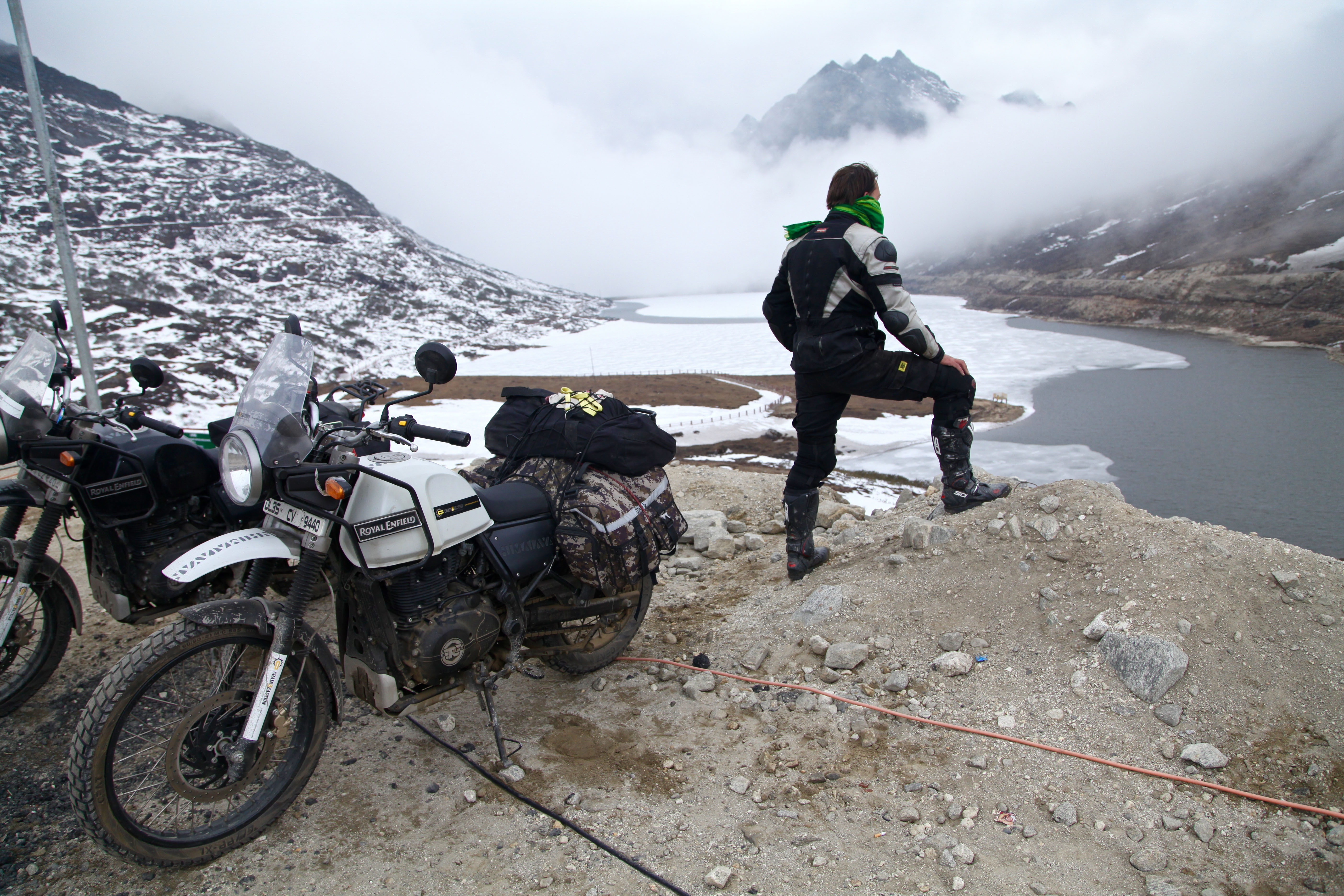
By Ian Lloyd Neubauer
When Shahwar Hussein meets me at the airport in Guhuwati, the gateway to India’s little-visited northeast region – it’s like being reunited with a long lost friend. A one-time motoring journalist from New Delhi who gave up life in the fast lane to run motorcycle tours in the northeast, Shahwar and I met online three years ago when I expressed interest in exploring his part of the world. But every year something got in the way.
But in 2017 our stars finally aligned with the launch of the Himalayan – a new motorcycle by Royal Enfield, the company behind the Bullet, a single-cylinder bike designed in 1931 by a subsidiary of the Royal Small Arms Factory in Enfield in the U.K. The Bullet was used extensively by the British Army during WWII and by the Indian Army in the decades that followed where it proved so hardy and versatile the Indians started building Bullets of their own. The Brits stopped making Bullets in 1967 yet the Indians are still building them today, albeit with more modern engines and brakes.
Inasmuch the Himalayan is more than another new way to get from A to B. It represents a leap into the 21st century for the maker of the longest-lived motorcycle design in history and a new chapter in the annals of motoring history that I have a strong personal connection to.
I’ve ridden Bullets all over the world and had closely followed the Himalayan’s development over the past few years. Now that it’d been released I had to ride it myself – not on a track or the trails in Australia but in the mighty Himalayas, the mountain range it was designed to conquer. So when I called Shahwar out of the blue and asked him to join me he didn’t hesitate and said he had the perfect road-test in mind: a 1200km, eight-day return journey from Guhuwati to Tawang, a city in the remote Himalayan state of Arunachal Pradesh home to a soaring 300-year-old monastery where the Dalai Lama found refuge after China invaded Tibet in 1959. A lone, muddy, landslide and snow-prone thoroughfare that crosses four high-altitude mountain passes, the Tawang Road, Shahwar said, would put the Himalayan to the ultimate test.
THE OMEN
An adventure-touring bike that looks as up-to-date as anything the Japs or German would build but with retro-military touches like a boxy petrol tank, dual-purpose tyres and jerry can holders, the Himalayan makes an awesome first impression. But its heritage is a double-edged sword. Made with cheap components and for the spendthrift Indian market, it’s been plagued by quality-control problems and our bikes do not prove immune.
On Day 1 of our tour, Shahwar’s bike won’t start; the battery is dead. We contact the dealership, which sends a new battery that takes four hours to arrive. It’s a bad omen but quickly forgotten as we zoom through Guwahati and the chaos theory that is Indian traffic, an epic Battle Royale between smoke-belching rickshaws, zig-zagging tricycle taxis, buses jammed people hanging out the window and clinging to the roofs, pick-up trucks carrying with speakers bellowing out political messages, holy cows that just stand there – stand there! – in the middle of the road, half-starved dogs, goats and chickens, wandering blind men and hordes of children on bicycles in brightly press uniforms.
The traffic thins out on the highway leading west out of the city but is replaced with an army of dirt-coloured lorries whose drivers would probably rate Mad Max not a dark dystopian fantasy but a driver’s education video. I come within inches of being clipped by an overtaking truck that forces me right off the and expend another half dozen of my nine lives before we reach our lodgings, an eco camp at Nameri National Park.
The following morning, Shahwar’s battery is playing up again and the only way to start is with a push start. We have no choice but to backtrack two hours to the nearest Royal Enfield dealership in the city of Tezpur. After spending eight hours pulling the bike apart, mechanics discover the coil that powers the sparkplug – a component that should last the life of any motorcycle – is burnt to a crisp. I pray this is the end of our mechanical troubles.
From Nameri we head north 30km to the border crossing between the states of Assam and Arunachal Pradesh. Manned by soldiers wielding heavy machine guns and even heavier frowns, it has the look and feel of an international border crossing. The Chinese, you see, consider Arunachal Pradesh part of Tibet and therefore their own. In 1962 they actually invaded, steamrolling through poorly equipped and trained Indian troops and making it all the way to Tezpur before pulling back. Arunachal Pradesh has remained heavily militarised ever since and tensions are especially high during my visit. India had just given the Dalai Lama permission to visit the Tawang Monastery and the Chinese were super-pissed. “The visit will cause serious damage to the peace and stability of the border region,” the Chinese foreign ministry said in a statement.
THE ROAD
The moment we cross the border we leave the suffocatingly dry river valleys of Assam behind and enter the foothills of the mighty Himalayas. The road, now a four-lane thoroughfare smooth as marble, ascends in long sensuous S-bends along the banks of a raging river.
But the easy riding is short-lived as the trail begins to thin and the sealed surface is replaced by the remains of a road was washed away my monsoon floods and ripped up by Chinese tanks decades ago. Asphalt reemerge here and there in the form of steps that jut out of puddles, rock fields and muds like hard-edged speed bumps. The cliff-hugging hairpin turns are the worst, where lurching trucks taking up the entire road appear without warning and all we can do is swerve violently to stay alive.
We pass raging waterfalls, convoys of olive-green army trucks and road gangs made entirely of women breaking rocks in the sun. When we stop for a drink near one of their camps, one road worker catches me eye. Heavily pregnant and dressed in rags with two dirty little kids napping at her feet, she’s cooking in a rusty tin by a small fire. Her home is an aluminium shanty sprayed with tar. Her front yard is a windblown dustbowl pockmarked in rubbish. I have problems. We all have problems. But travel helps us put our problems into perspective.
The further north we ride, the more monstrous the mountains become, now brownish with trees at the base and rocky parched peaks. We pass endless numbers of army and police checkpoints and an army base so large it take an hour to ride through it. We see temples and pilgrims, giant hairy yaks cut straight out of Monsters Inc. and thought-provoking road signs like ‘License to Drive not Fly’ and ‘Bro: Be Cautious At Curves’. We spend our nights in small family run hotels, where Shahwar and I share rum, spicy curries and stories about misadventures on the road before passing out and waking up to do it all again.
Over the next few days, we cover only 100km to 150km per day. It may not sound like much but it’s gruelling work making our way through the semi-submerged trail of landslide debris that now has taken hold of the road.
The Himalayan, to its credit, gobbles everything in its path – even fire. One day we see it an enormous cloud of smoke and ash seeping from a kilometres-long forest fire on the mountains above the road. A passing motorist warns us to turn back but we ride on all the same. Shahwar is a Muslim. I’m a Jew. But our religion is adventure riding and risk is an indelible part of what we do. A bit of fire isn’t going to make much difference – even when it kisses the road. We laugh when as the smoke thins out behind us, our egos and masculinity bolstered yet again.
THE PASS
We’re scaling a dusty trail that snakes up a mountain with hairpin turns so sharp they almost look like folds in the road when I feel it for the first time: a burning cold in the tips of my fingers and thumbs that is the onset of frostbite. Old photographs of the charred, blackened fingers of Antarctic explorers like Douglas Mawson and Ernest Shackleton flash through my mind as I realise I am now really playing with fire.
I pull over and put on a pair of cotton gloves under my winter riding gloves to stave off the cold, which helps for a few minutes. But as the road continues to ascend into clouds and random patches of snow on the shoulder grow into sheets that cover everything in sight, the burning sensation returns to my hands. Soon I have lost movement in six fingers, leaving me the use of only my forefingers and thumbs. Then Shahwar does the strangest thing. He pulls over, dismounts and wraps his gloved hands around his bike’s muffler to warm them up. I follow suit, screaming into my helmet as the blood recirculates through my fingers and thumbs – a pain that’s many times more excruciating than the freezing itself.
When our hands stop burning we get back on our bikes, riding through a world now whited out by snow. The thermometer on my Himalayan’s instrument panel reads -7°C. Ice crystals form on my gloves and on my helmet’s visor, forcing me to ride face first into a howling, blowing blizzard. A flying particle gets lodged in my left eye, yet for all the pain it causes it may as well be a spear. I ride on with one eye shut while trying to see small patches of road not blanketed in mist, snow or black ice. When I can take no more I pull over, tear off my helmet and crouch by the bike to find cover from the snow. Shahwar pulls over, takes stock of what’s happening and commences emergency roadside treatment by dripping water, poking his finger and blowing into my eye. It does the trick, dislodging the offending particle. When the pain in my eye subsides I deal with the pain in my hands by grabbing the muffler again, screaming like a Banshee as the blood cuts a fresh path through my shrivelled capillaries only to get back on my bike and do it all over again. Ride for five minutes. Get off. Grab the muffler. Scream for five minutes. Like some sick sad motorcycling sadomasochist show on ice.
I’m far past my breaking point when I see a gap in the blizzard and the outline of a large ornamental gate cut straight out of a kung fu movie that marks Sela Pass, 4,170m above sea level. Near the gate is an army canteen with a chimney peeping out of a roof sagging with snow and ice. I pull over, dismounting extra slow to ensure I don’t put the bike’s foot stand or my feet on a patch of black ice. The door is less than 10m away but the blizzard is blowing so hard I have to bend forward and use my half-frozen hands to clutch at the ground to avoid getting bowled over by the wind. When I finally reach the door, it pops opens and a soldier in a ski mask welcomes me inside. I make a final lunge for shelter, unwittingly stepping in the middle of a patch of black ice and fall arse over tit.
THE DESCENT
An hour passes before we muster up the courage to get back on my road. Just beyond the ornamental gate is a frozen blue lake backdropped by a jagged glacier-rimmed peak where Merlin or Soron or some other wizard must live. I am chugging along in first gear, my feet kicking along muddy snow when I see the one thing motorcyclists fear most. Not black ice but white ice and not just a patch of it here and there but sheets of the shit covering the entire road. I touch the rear brake but it has no effect and I’m left with no choice but to advance with my feet skiing along the ice to stabilise the bike like training wheels.
There are cars also trying to make it along the ice, everything from little hatchbacks to 4WDs, none of which are fitted with chains. Some vehicles lie at skewed angles on the side of the road, and I see one car on its side with its tyres still spinning in the air while the driver stands alongside the wreck scratching his head.
It’s only by the will of god that I remain upright though Shahwar isn’t so lucky and comes off around a hairpin bend. When he tries to lift his Himalayan from the ground, it simply slides around in a circle, and I can’t help but laugh. Then, the driver of a hatchback who’s lost all control of his car comes spiralling towards Shawar and his machine on an intercept course. All hope is lost and Shahwar dives out of harm’s way when the hatchback starts sliding in a different direction before banging into a parked army truck.
I help Shahwar lift his bike and forward we go, unable to stop or go back where we came from. The thermometer now reads -10°C and frostbite has returned with a vengeance, not only in my fingers but in my feet, too. My eyes sting like crazy, it’s impossible to blink, my thighs start cramping up and I lose control of my bladder. I also lose all track of time while navigating the icy descent, praying for the ice and aches and pains to go away.
When I finally see the first patch of dirt I am gifted with a second wind, and soon we find ourselves back on dry soil. A short time later we reach the Jaswant Garh Memorial Army Base, named after a rifleman of the Indian army who singlehandedly held off the Chinese for three days in 1962 and killed 300 enemy troops before a sniper took him out. Today, the Indian army keeps a contingent here to take care of Jaswant as though he were alive, cooking him three meals a day. They also hand out free hot cups of tea and spicy potato samosas to the few motorists who make it through, yet don’t feel compelled to stop other drivers coming from Tawang from heading up to the pass.
THE MONASTERY
The next day I awake with a jolt in a room that’s so cold I can actually see my breath. When I muster some strength I get out of bed and crack out a few push-ups to get the blood flowing again. I then peel back the curtains to see something I hadn’t seen for days – sunshine, blue skies and freshly dumped snow. On a distant hilltop, I can see the Tawang Monastery. When we arrived late last night it was concealed by the mist, but this morning the 330-year old palace soars above the city like a celestial fort guarding India itself.
The road to Tawang has been much more than a journey. It has been a trial of fire and ice that has led me back to myself and the fateful day some 15 years ago when I first jumped on a motorbike while on holidays in Cambodia. Over the years I’ve ridden some of most scenic and challenging roads in the world, from Patagonia’s Austral Highway to the Trans-Himalayan Highway in Nepal’s Mustang Province. But never have I experienced so much pleasure and pain on two wheels as I have over the past four days.
They say ‘half the journey is getting there’. In this case, it couldn’t possibly be more true because tomorrow we need to turn back and do it again.
Yet with a bit of luck, some good weather, a trusty guide by my side and an indomitable motorcycle that’s now missing its mudguard, stop light and a handful of other parts, there shouldn’t be any more dramas. Right?
D.I.Y.
Chain Reaction India (chainreactionindia.com) offers 12-, 15- and 21-day tours of India’s northeast for groups of four to six riders for A$220 per rider per day. Back-up vehicle, fuel, food, water, accommodation, use of a Royal Enfield and laundry. AirAsia X (Airasia.com) offers daily flights from Sydney, the Gold Coast and Perth to India from A$282 one way.
The author was a guest of Chain Reaction India, AirAsia and Royal Enfield.

